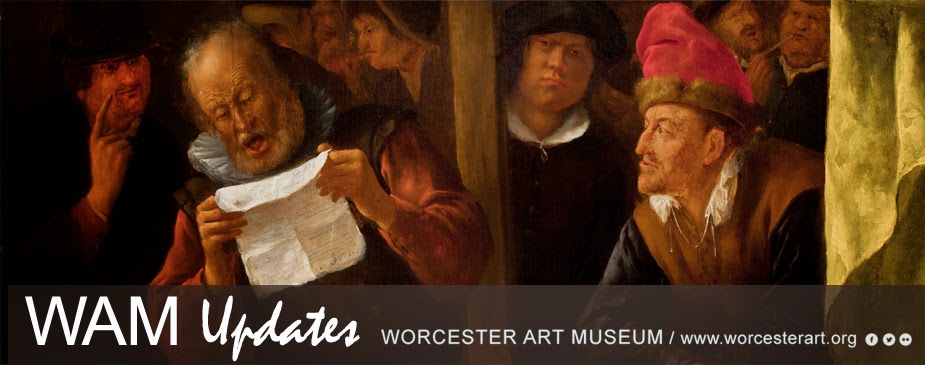I had the opportunity to talk with Lauren
Morocco, the recently appointed Manager of the Salisbury Cultural
District. Lauren is a graduate from Assumption College and has a Master’s
Degree in Museum Studies. She has dedicated her time to working for local
non-profits and has a deep passion for community building and educating about
culture and the arts. Throughout this interview I discuss with Lauren what drew
her to this particular work and the vision she has as the Salisbury Cultural
District’s Manager.
 |
Lauren Morocco,
Salisbury Cultural District Manager |
NA: I understand that you have worked for many years within the
stakeholder organizations of the Salisbury Cultural District. What made you
interested in community building?
LM: That’s a good question! I’ve always had a job working for a
non-profit within Worcester or working in the community. It's
something I enjoy. I think that you have to have a love for that kind of
community-based service. I really don’t think I could see myself doing any
other sort of job. It’s just something I love doing. I like helping the community, and I like being out in the community. I’ve lived and worked in Worcester my
entire life so it’s been interesting to see the ebbs and flows of the city’s
progress.
NA: What attracted you to the Salisbury Cultural District? What
makes this community unique?
LM: It’s a unique community in and of itself. It has so many
different things just in one small little area. You have these giant
institutions that are known pretty much worldwide like the Worcester Art Museum
and the Worcester Antiquarian Society. Then you have these smaller wonderful
institutions like the Worcester Craft Center, the Sprinkler Factory, and the
Worcester Historical Museum. Then you have the business district that I grew up
going to. My family would go
to The Sole Proprietor on special occasions, and my parents went to The Boynton when
they were kids. My dad went to WPI, and my brother did too. The district has
always been an area that my family has had a history with. So, it’s important for
me to give back to a place that’s given me so much.
NA: What are your goals with becoming a part of the Salisbury
Cultural District?
LM: I would like to bring more visibility to the district as a
whole. I think there is definitely some awareness about what’s in it, but I
don’t think people necessarily say, "Oh, the Salisbury Cultural
District... that’s a thing." The canal district of Worcester is definitely
something people know of. It’s not an identified district like we are, but it’s
definitely something that we can learn things from because they are promoting
themselves in a way that is really working for them. We need to be identifiable
to the community.
NA: What do you envision for the Salisbury Cultural District in
5-10 years?
LM: I definitely want people to know what and where we are. We
started to talk about having either an annual or regular event that will brand
us and will bring communities within the district or those nearby to visit. I
think creating an event would be amazing. It should be something sustainable so
that the district continues to thrive within 5-10 years.
NA: Why do you feel it’s important to maintain organizations like
the Salisbury Cultural District?
LM: I think there is clearly an advantage to having an identified
cultural district. The Mass Cultural Council identifies organizations and
assists in creating partnerships to build a sense of cultural identity within
the district. This is helpful especially when you have so many strong presences
within that community. I think in general the best part about having an
identified district would be just to have a catch-all identifier and to have
that community.
NA: What are some of your favorite things to do in Worcester?
LM: As a kid, I was always a big museum person anyway. I loved
going to the Worcester Art Museum, and I took a lot of art classes. They have
so many really cool things there that I don’t think a lot of people understand
the scope of what’s offered. The Art Museum is definitely one of my
favorites. The Historical Museum is super cool, and I love a good hands-on
museum. They have a lot of smaller exhibits-especially for the kids—that you
can touch and play with. I love activities like that. Within our district,
there is definitely the Boynton, the Sole, and WooBerry. Outside the district, I
like going to a lot of concerts.
Click here
for more information about the Salisbury Cultural District
- Nurah Ali, Marketing Department Intern
Media Arts and Sciences Major, Wellesley College, '21













